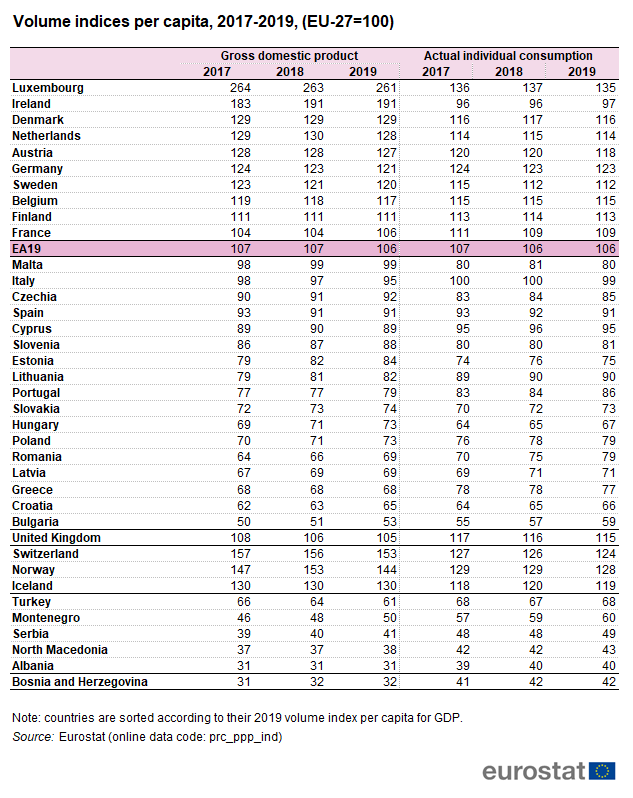Eurostat: Hungary among the poorest EU countries again

According to Eurostat’s most recent analysis, the level of individual consumption per capita in Hungary was barely two-thirds of the EU average (69%) in 2019, which placed us in the bottom three again.
Eurostat’s recent study analysed purchasing power parities and related economic indicators, like the gross domestic product (GDP) per capita, the level of actual individual consumption (AIC) per capita, and the countries’ price level indices in the European Union and a few other countries.
It turns out that Luxembourg has the highest GDP per capita among all 37 countries included in the analysis. Luxemburg’s GDP per capita is more than two and a half times above the EU average. In comparison, Bulgaria had the lowest level of GDP per capita.
Actual individual consumption (AIC)
GDP is a good indicator of the level of economic activity, but the material welfare of households can be better described by the Actual Individual Consumption (AIC).
“Actual Individual Consumption (AIC) consists of goods and services actually consumed by individuals, irrespective of whether these goods and services are purchased and paid for by households, by government, or by non-profit organisations. In international volume comparisons, AIC is often seen as a preferable measure, since it is not influenced by the fact that the organisation of certain important services consumed by households, like health and education services differs a lot across countries.”
Hungary’s AIC was barely two-thirds of the EU average (69%) in 2019. Living standards were lower only in two EU states: Bulgaria (59%) and Croatia (66%). All our neighbouring countries did better, including Romania (79%), which is often compared to Hungary.

The GDP per capita of Hungary was less than 30% below the average, and Hungary’s price levels were less than 40% below that average. In terms of the price level indices per AIC, Hungary did a little better (62.1%)
Source: https://ec.europa.eu/






Interesting study.
But please note.
Luxembourg numbers although they look fantastic are boosted by the fact that it is a place where a high proportion of foreign workers are employed at high level jobs. They are not included a part of the population when GDP per person is calculated.
Similarly in Ireland the huge tax incentives given to Apple and Dell increase their numbers significantly. That’s is why EU is challenging their tax policies and as a side note why Ireland has become the attack dog against UK in the Brexot debate.
We all know that pre Wuhan flu Hungary had a labour shortage that was pushing up salaries and prices. We all know that the millions of Polish workers exported to the UK and Germany have been replaced by low cost Ukrainian workers.
I am not saying this is accounting for Hungary being low in the table but its important to know how these statistics can be manipulated.
This is very false data.
These comparisons, however, are calculated with individual wages, and do not factor in the impact of family tax benefits, Portfolio emphasizes.
As a result, average Hungarian households with at least two children have a 10% higher disposable household income. In the case of families with parents earning less than the average wage, the gap is even bigger: Hungarian families may have 25% more household income than their Romanian counterparts, Portfolio writes.
If we compare the average net wages instead of the gross wages then it appears that Hungary surpasses Romania by around 20% as measured in PPP. In addition, the ranking is done without taking domestic family tax breaks into account.
The domestic index is not only better than in Romania: the average Hungarian salary is worth more than those in Croatia, Lithuania, Slovakia, Latvia, and Bulgaria.
The paper also points out that from 2018, employers’ taxes and contributions are also included in gross earnings in Romania, which greatly distorts the baseline data.